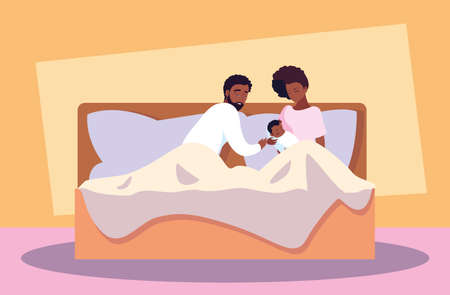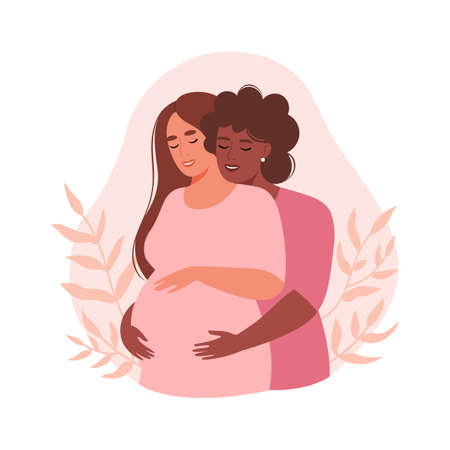Understanding Child Benefit in the UK
If you’re anything like me—a new dad just finding my feet—you’ll quickly realise there’s a whole world of support out there for parents in the UK. One of the most important schemes to get your head around is Child Benefit. Let’s break down what it actually is, who can claim it, and why you shouldn’t let it slip through the net—especially as you move on from maternity pay.
What is Child Benefit?
Child Benefit is a regular payment from the government to help with the cost of raising children. It’s not means-tested, so pretty much every parent or carer is entitled to something, regardless of income (although high earners may need to pay some back via tax—more on that later). For many families, this little boost each month helps cover everything from nappies to nursery fees.
Who’s Eligible?
Eligibility rules are straightforward for most new parents. If you’re responsible for a child under 16 (or under 20 if they stay in approved education or training), you can claim. It doesn’t matter if you’re working, on maternity leave, or even unemployed. Here’s a quick overview:
| Eligibility Criteria | Details |
|---|---|
| Residency | You must live in the UK |
| Child Age | Under 16 (or up to 20 in approved education/training) |
| Responsibility | You’re responsible for the child’s upbringing |
Why Does Child Benefit Matter?
If you’ve just come off maternity pay, your finances might be feeling a bit tight. That’s where Child Benefit steps in—it offers some welcome breathing space while you adjust to your new budget as a parent. It also counts towards your National Insurance credits, which is crucial for your future State Pension entitlement (something many new parents overlook!).
So whether you’re still bleary-eyed from night feeds or back at work juggling nursery runs, getting set up with Child Benefit should be top of your post-maternity pay checklist.
2. Coming to the End of Maternity Pay
If you’re anything like me, you probably spent the first few weeks with your new baby in a whirlwind of sleepless nights, endless nappies, and cups of tea gone cold. It’s only when you get a letter from your employer or see the balance in your bank account changing that it really hits: maternity pay doesn’t last forever. Here’s what you need to know about how maternity pay works in the UK, what happens as it comes to an end, and why it’s so important for your family finances.
Maternity Pay Basics in the UK
| Type of Pay | Duration | Amount (per week) |
|---|---|---|
| Statutory Maternity Pay (SMP) | Up to 39 weeks | First 6 weeks: 90% of average weekly earnings Next 33 weeks: £172.48 or 90% of average weekly earnings (whichever is lower) |
| Maternity Allowance | Up to 39 weeks | £172.48 or 90% of average weekly earnings (whichever is lower) |
The majority of new mums will receive Statutory Maternity Pay if they’ve been working for their employer for at least 26 weeks by the end of the qualifying week and earn at least £123 per week on average. Some parents who don’t qualify may get Maternity Allowance instead.
What Happens When Maternity Pay Ends?
The reality is, once those 39 weeks are up, both SMP and Maternity Allowance come to a sudden stop. For me, that was a real wake-up call—it meant no more regular payments from my employer or Jobcentre Plus, just as our little one seemed to be getting more expensive! It can feel like you’re suddenly dropped off a financial cliff edge.
The Impact on Household Finances
Losing maternity pay can have a big impact on your monthly budget, especially if you’re not ready or able to return to work full-time. The cost of baby essentials—nappies, formula, clothes—doesn’t go away just because your payments do! Here’s a quick overview of what changes:
| Before End of Maternity Pay | After End of Maternity Pay |
|---|---|
| Regular income from SMP/Maternity Allowance Potential top-ups from employer Budget easier to manage |
No more SMP/Maternity Allowance Relying on partner’s income/savings Need to review all expenses and entitlements |
A Personal Tip
I found it helpful to track every penny for a month before my payments ended—seeing where the money was going made it much easier to plan ahead. And if you haven’t already looked into Child Benefit and other family support options, now’s the time! I’ll cover that next.

3. How and When to Apply for Child Benefit
As a new dad who recently juggled sleepless nights, nappy changes, and paperwork, I know first-hand that sorting out Child Benefit can feel overwhelming after maternity pay ends. But trust me, getting it right early is a lifesaver for your family budget. Here’s my step-by-step guide to claiming Child Benefit in the UK—complete with timings, key documents, and some tips I wish someone had told me!
Step 1: Know When You’re Eligible
You can apply for Child Benefit as soon as you’ve registered your child’s birth (which you’ll need to do within 42 days of the little one arriving). It’s best not to hang about—the sooner you apply, the sooner payments start rolling in. If you wait more than three months after your baby’s birth, you could miss out on backdated payments.
Step 2: Gather Your Documents
This bit is crucial—having all your paperwork ready will save loads of faff. Here’s what you’ll need:
| Document | Why You Need It |
|---|---|
| Child’s birth certificate | Proof of your child’s details |
| Your National Insurance number | For identity checks and linking to your record |
| Your partner’s National Insurance number (if applicable) | If you’re making a joint claim or want them as the recipient |
| Your bank account details | So HMRC can pay you directly |
Step 3: Fill Out the Claim Form
The main form is called CH2: Child Benefit claim form. You can download it from the GOV.UK website or pick one up at the post office if you fancy a stroll with the pram. If it’s your first child, you’ll only need this form; if you’ve already got another child and are topping up your claim, there’s an extra bit (CH2(CS)) to fill in.
Top Tips:
- Fill in all sections—even if they seem obvious.
- If English isn’t your first language, ask for help—mistakes slow things down.
- Attach copies (not originals) of important docs unless they specifically ask for originals.
Step 4: Send Off Your Application
Post your completed form and documents to the address on the form. Don’t forget to keep a copy just in case things go astray—Royal Mail isn’t always perfect! If you’re worried about timings, consider sending it recorded delivery.
Step 5: What Happens Next?
You should hear back from HMRC within three to six weeks. They’ll send a letter confirming your award and payment dates. If they need more info, they’ll get in touch—so keep an eye on your post.
Troubleshooting Common Issues:
- If you don’t hear anything after six weeks, give HMRC a ring—it’s better to chase than wait indefinitely.
- If maternity pay is ending soon, let HMRC know—you might be able to speed things up or get an emergency payment.
- If you or your partner earns over £50k per year, check if you need to register for Self Assessment due to the High Income Child Benefit Charge (it caught me out!).
Sorting Child Benefit early means one less thing on your plate—and more time enjoying cuddles and baby giggles! In the next section, we’ll look at how Child Benefit fits alongside other parental entitlements during this transition period.
4. Tax Implications and Income Thresholds
Right, so you’ve just wrapped your head around maternity pay ending and now you’re thinking about Child Benefit – but here’s the bit many new parents miss: how Child Benefit can affect your taxes in the UK. The main thing to watch out for is something called the High Income Child Benefit Charge (HICBC). It’s a bit of a mouthful, but it basically means that if either you or your partner earns over a certain amount, you might have to pay some or even all of your Child Benefit back through your tax return.
Understanding the High Income Child Benefit Charge
If either parent has an individual income over £50,000 per year, HMRC will start to claw back some of your Child Benefit through extra tax. Once your income hits £60,000 or more, you’ll have to pay back the full amount. It doesn’t matter who actually claims the benefit – it’s based on whoever has the highest income in the household.
How Much Could You Owe?
| Highest Individual Income | Percentage of Child Benefit to Repay |
|---|---|
| Up to £50,000 | 0% (no repayment) |
| £51,000 | 10% |
| £55,000 | 50% |
| £59,000 | 90% |
| £60,000 or more | 100% (full repayment) |
What Should New Parents Consider?
If your income is close to these thresholds, it’s worth doing a bit of number crunching. You can still claim Child Benefit even if you end up paying it all back – this protects your National Insurance record and could help with getting State Pension credits later on. But if you don’t want the hassle of filling out a Self Assessment tax return every year, you can opt out of receiving payments while still registering for Child Benefit. Personally, after my first year as a dad, I realised I was just over the threshold and had to file a tax return for the first time in my life – not what I expected when I was knee-deep in nappies! So double check your earnings before deciding whether to claim or opt out.
5. Making the Transition Smoother
If you’re anything like me, the move from maternity pay to relying on Child Benefit (and perhaps a single income) can feel like stepping off a cliff—especially with nappies, wipes, and baby grows piling up in your online shopping basket. Here are some practical tips from my own experience that helped our family stay afloat during that tricky period.
Budgeting: Getting Real with Your Numbers
The first thing I did was sit down with my partner and make a realistic budget. We listed every outgoing—yes, even the cheeky Costa coffees—and matched it against our new income. Heres a simple table I used:
| Monthly Expense | Pre-Maternity (£) | Post-Maternity (£) |
|---|---|---|
| Rent/Mortgage | 800 | 800 |
| Bills & Utilities | 200 | 200 |
| Groceries | 350 | 400 (with formula etc.) |
| Baby Essentials | 0 | 100+ |
| Coffee & Treats | 60 | 20 (ouch!) |
This gave us a clear picture of where we could trim back. It’s never fun, but knowing where your cash is going makes all the difference.
Local Resources: Don’t Be Shy to Ask for Help
The UK is actually brilliant when it comes to community support. From local NCT nearly new sales to council-run children’s centres, there’s loads on offer. We joined our local ‘parent and baby’ group, which not only saved us money on toys but also gave us a chance to swap tips (and have a moan).
Useful Local Resources:
- Your local council website – check for childcare vouchers or support grants.
- NHS Start4Life – advice and freebies for new parents.
- Children’s Centres – baby groups, feeding support, even free health visitor drop-ins.
- Libraries – often run free rhyme times and borrowable toys.
Preparing for the Gap Between Income Changes
The trickiest bit is the gap between your last maternity pay and your first Child Benefit payment. For us, this was about five weeks—a long time when you’re counting pennies. Here’s what helped:
- If possible, build up a small buffer fund before your maternity pay ends—even £100 makes a difference.
- Set reminders for all benefit application deadlines so nothing gets delayed.
- If you’re struggling, speak to your local Citizens Advice Bureau early—they know all the best workarounds for families in need.
Dad-to-Dad Tip:
You’re not alone! Every parent I spoke to in our NCT group was feeling the pinch, but sharing experiences (and hand-me-downs) made things much less stressful. And remember: it really does get easier as you settle into your new routine.
6. Common Mistakes and How to Avoid Them
As a new dad who’s just navigated the world of Child Benefit after maternity pay, I can tell you: it’s easy to slip up if you’re not careful. Here are some classic mistakes parents make in the UK when making this transition—and how you can steer clear of them:
Missing Out on Application Deadlines
One big pitfall is simply forgetting to apply for Child Benefit soon after your baby arrives or maternity pay ends. The clock starts ticking as soon as your little one is born, and backdating only goes so far (usually three months). Set a reminder as soon as you get that birth certificate!
Overlooking Income Thresholds
If you or your partner earn over £50,000 a year, things get tricky with the High Income Child Benefit Charge (HICBC). Lots of parents don’t realise they’ll need to register for Self Assessment and potentially pay some or all of the benefit back.
| Income Level | What You Need To Do |
|---|---|
| Below £50,000 | No HICBC – claim full benefit |
| £50,000 – £60,000 | Partial charge – register for Self Assessment |
| Above £60,000 | Full charge – may need to pay all benefit back |
Poor Paperwork Organisation
I’ve seen friends rummaging through piles of post for NI numbers and birth certificates at the last minute. Keep your documents handy! You’ll need them for both ending maternity pay and starting your Child Benefit claim.
Tip:
Create a “New Parent” folder—digital or paper—so everything’s ready when HMRC asks.
Forgetting to Update HMRC About Changes
Your circumstances might change (new job, moving house, income changes)—but if you don’t tell HMRC quickly, you could be overpaid or underpaid. That’s a headache you don’t want!
How To Stay Ahead:
- Add HMRC’s contact info to your phone for quick updates.
- Check your details each tax year.
Assuming You Have To Claim the Money Itself
This one gets lots of parents: Even if you’re not eligible for the payments because of income, you should still fill out the claim form. Why? Because it protects your child’s National Insurance credits and future entitlement to State Pension. Don’t skip it!
The Bottom Line
The switch from maternity pay to Child Benefit isn’t rocket science—but there are real-life pitfalls that can catch out even the most organised mum or dad. Stay sharp, keep records tidy, and don’t be afraid to ask questions. Trust me: it saves time and stress in the long run.


